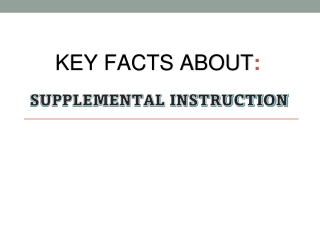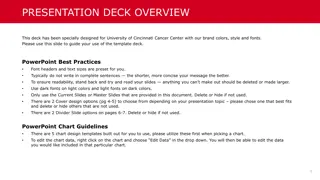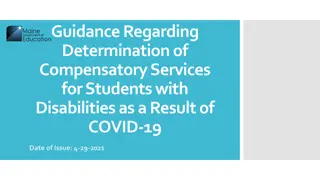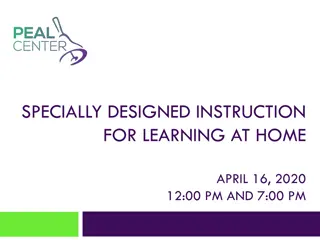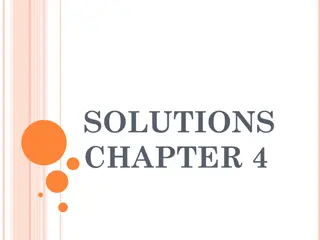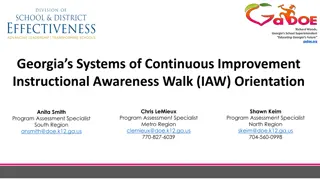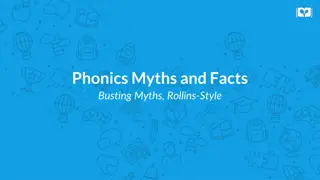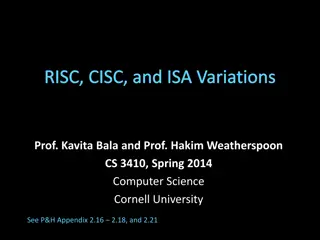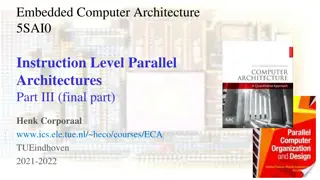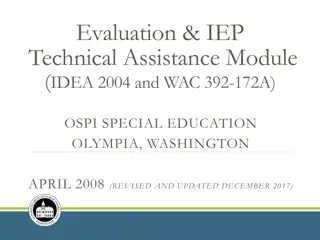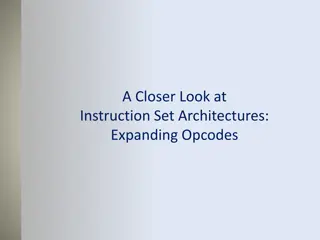
Accommodations and Modifications in Special Education
Learn about the importance and differences between accommodations and modifications in Special Education. Discover how these strategies support students with disabilities in academic settings and ensure equal opportunities for learning. Explore commonly used accommodations and modifications to enhance student success.
Uploaded on | 1 Views
Download Presentation

Please find below an Image/Link to download the presentation.
The content on the website is provided AS IS for your information and personal use only. It may not be sold, licensed, or shared on other websites without obtaining consent from the author. If you encounter any issues during the download, it is possible that the publisher has removed the file from their server.
You are allowed to download the files provided on this website for personal or commercial use, subject to the condition that they are used lawfully. All files are the property of their respective owners.
The content on the website is provided AS IS for your information and personal use only. It may not be sold, licensed, or shared on other websites without obtaining consent from the author.
E N D
Presentation Transcript
IEP Primer: Specially Designed Instruction Teacher In Service: August 23, 2017 Sandy Michalik Supervisor of Special Education
Specially Designed Instruction (SDI) SDIs include adaptations, accommodations, or modifications, as appropriate.
Specially Designed Instruction (SDI) These are identified services and supports to enable students with disabilities to participate and succeed in the academic setting. The SDIs listed the location, frequency, projected beginning date, and anticipated duration.
Accommodations and Modifications While they sound similar, they serve different purposes. Accommodations change how a student learns the material. A modification changes what a student is taught or expected to learn.
Accommodation Accommodation an adjustment to an activity or setting that removes a barrier presented by a disability so that students may have equal access to the same opportunities available to students without disabilities. An accommodation should not alter the essential purpose of the assignment, but provide an alternate way of teaching or testing.
Accommodation Some commonly used accommodations are as follows: Allow for extra time Directions orally read Repetition of directions Testing in a small group setting Proximity control Tests orally read Break assignments into smaller, more manageable parts Oral response No penalty for misspelled words (exclude spelling tests)
Modification Modification - Individualized changes, or alterations, made to the content and performance expectations for students Quantity Modify the number of items that the child is expected to learn or complete Output How a student responds to instruction Alternate Goals
Modifications Some commonly used modifications are as follows: Modify the environment by reducing visual distractions Modify the pace by substituting assignments Use multi-sensory approach to presenting material Organize test from easy to difficult Study carrel Open book notes
Specially Designed Instruction (SDI) Who determines the SDIs needed?? Most of the time, it is the classroom (general education) teacher (The general education teacher is a required member of the IEP team)
Specially Designed Instruction (SDI) The special education teacher who writes the IEP obtains recommended SDI information from: The Evaluation Report of Reevaluation Report Teachers Parent Student (if applicable) Progress monitoring data Constant collaboration
Specially Designed Instruction (SDI) The IEP team determines the location and frequency of each SDI. This should be a team effort. Do not list daily as a frequency. Do not list school as a location.
True or False? Jacob s previous IEP listed tests orally read as an SDI. Although Jacob no longer uses this accommodation, the IEP team decided to keep that SDI, in case Jacob would ever need that level of support in the future. This was a good idea True False
True or False? False The IEP is out of compliance if an SDI is listed, but not followed.
True or False? During an IEP meeting, the parent requests a specific SDI to be added. The professional team (teachers, guidance counselor, principal) determines that the suggested SDI is not necessary, and would be providing the student with too much support. However, that specific SDI must listed in the IEP, because of the parent request. True False
True or False? False The content of the IEP must be a team decision.
SDIs and the Regular Education Teacher How does a teacher know what SDIs a special education student has? The special education teacher who case manages the student is responsible for providing a list of SDIs and thoroughly explaining them for understandability. A new list is provided with each new IEP.
SDIs and the Regular Education Teacher What does a teacher do if he/she feels the SDI cannot easily be delivered in the classroom, or if the teacher disagrees with the SDI? Consult with the special education teacher (case manager) and discuss the situation. In some cases, the IEP may require a revision.
SDIs and the Regular Education Teacher How can a general education teacher ensure that each special education student s SDIs are being followed: Retain each SDI list, keep it accessible, and periodically review it Maintain regular consultation with the special education teacher Make note of how successful the student is in your classroom Use paraeducator assistance Keep SDI information in your substitute plans
SDIs and the Regular Education Teacher Remember: Be mindful of semester, marking period, and cycle changes Be sure that you are following the frequency You are not asking students to follow the plan
And if things werent stressful enough The Gaskin Settlement added Questions for the IEP Team in the form of outlining Supplementary Aids and Services. This is to guarantee the parent that the student participates, to the maximum extent appropriate, in the general education setting. In essence, IEP Section VII requires the IEP team to review the SDIs that were discussed.
Supplementary Aids and Services 1. What supplementary aids and services were considered? What supplementary aids and services were rejected? Explain why the supplementary aids and services will or will not enable the student to make progress on the goals and objectives (if applicable) in this IEP in the general education class. 2. What benefits are provided in the general education class with supplementary aids and services versus the benefits provided in the special education class? 3. What potentially beneficial effects and/or harmful effects might be expected on the student with disabilities or the other students in the class, even with supplementary aids and services? 4. To what extent, if any, will the student participate with nondisabled peers in extracurricular activities or other nonacademic activities?
Requests from your Special Education Supervisor Please participate in the IEP meeting. Your presence is valued. Please be respectfully open and honest. Please call or email with any questions. Please always provide your input and perspective. Please comply with the IEP and request assistance and clarification when needed.
Supplementary Aids and Services Additional questions Or Comments for improvement

